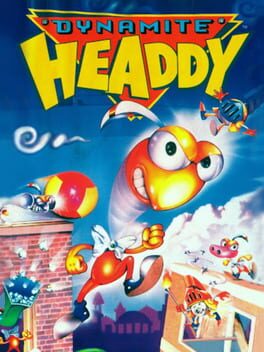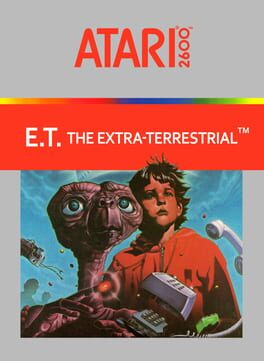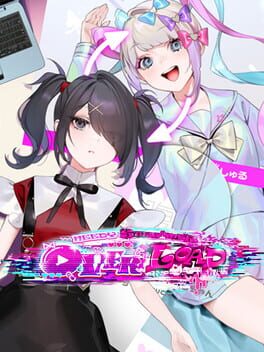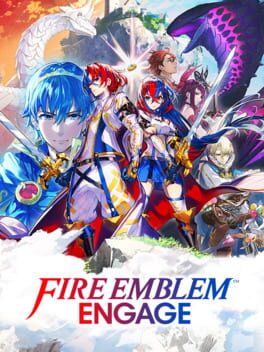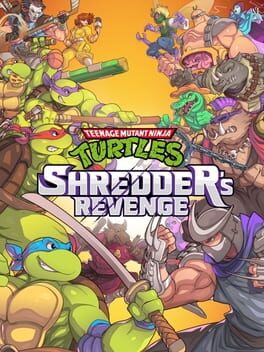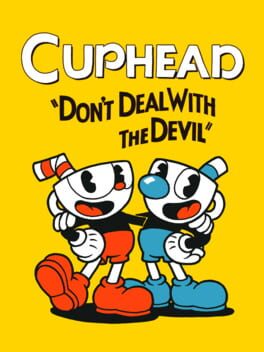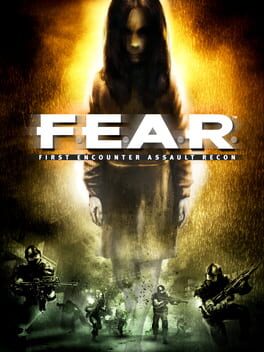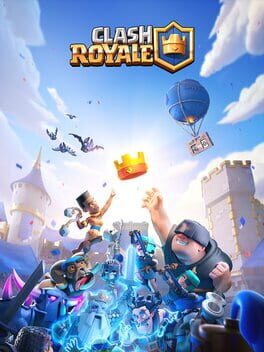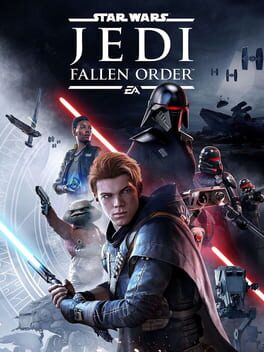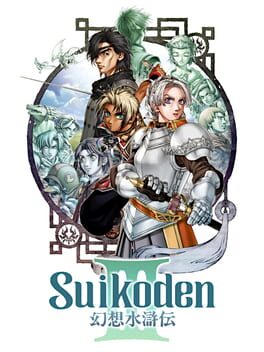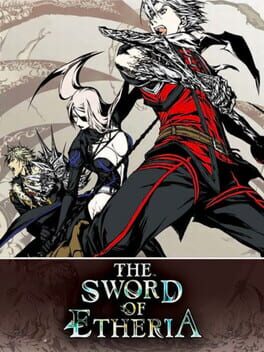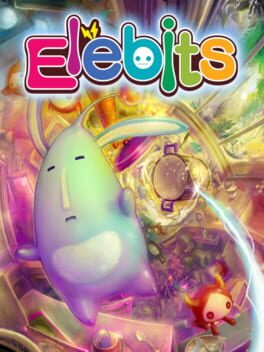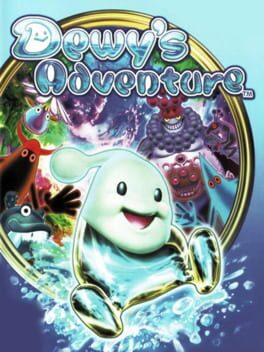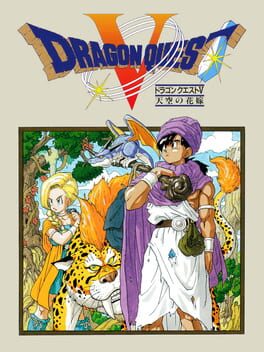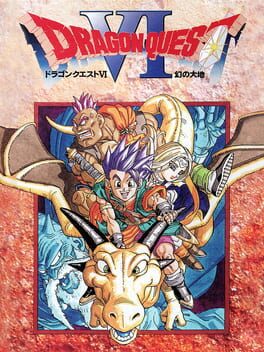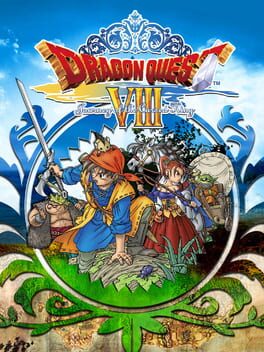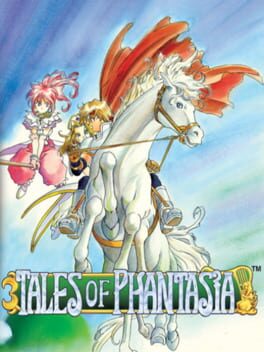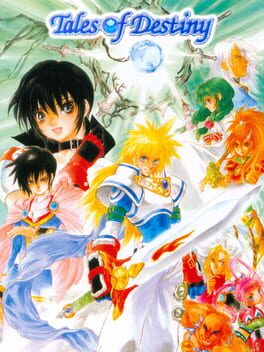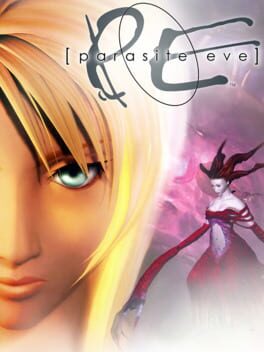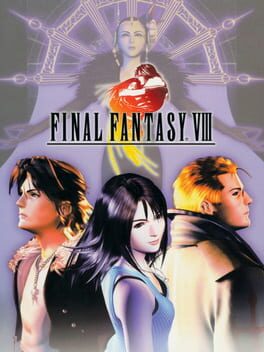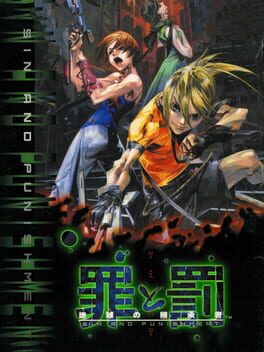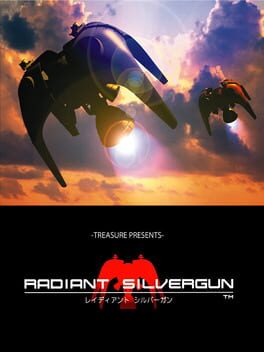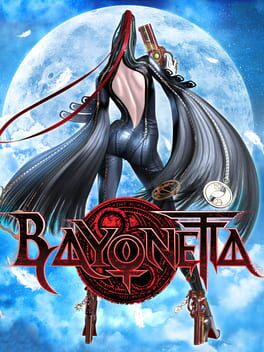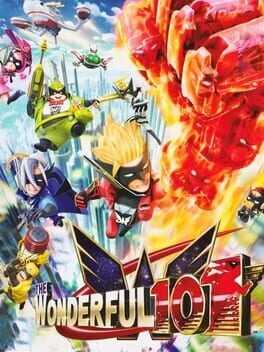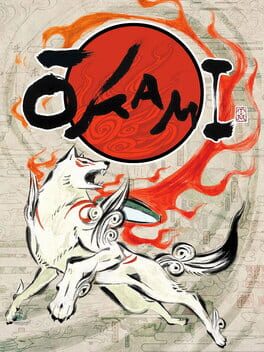Akkusativ
62 reviews liked by Akkusativ
Dynamite Headdy
1994
I've got real admiration for the theatrical trappings, with panels falling off the back wall and gyrating stagehands gussying up the set as you stroll through, but I think coming back to this style of gameplay doesn't hit the same for me anymore. the treasure hyperfocus on impressive boss fights is here without the richer mechanics of gunstar heroes or alien soldier, leaving much stricter scenarios where the player has less leverage over the proceedings. it's heavily setpiece-driven and thus built upon cracking open whatever essential strategy solves each individual encounter rather than learning particular mechanics over the course of the game. a good example would be izayoi, who has a rapid arm extension attack that aims for your head, so if you throw your head above you right when she starts tracking, you can repeatedly have her whiff and then bop her in the face when she briefly exposes it afterwards. that's a cool little extension of the game's primary mechanic (you can throw your head in any direction), but once you lock it in the repetition of her behavior pattern and her cyclically available weak point make the fight rather static.
not sure what to think of the different abilities you can get with various heads throughout either. theoretically I could've enjoyed having them woven in through enemies or something else organic a la kirby, but having the abilities just sitting out in the open right where you need them feels a bit raw. it's especially apparent given how few there are that alter mobility or do anything other than make combat easier; perhaps a bit of tunnel vision on the developer's part, even though you can tell they attempted some actual level design here. you may get a sequence with some wall-climbing thanks to the spiky head ability, but these segments boil down just to "scale the wall with the powerup" without many complicating factors thrown in aside from a late-game segment where you use it to stall on the ceiling and avoid rocket trains zooming by. the way that abilities are applied in the boss fights also fall into a narrow paradigm, with more than a few bosses having abilities sitting around that effectively shut them off: time stop in multiple fights, both a bomb with crazy damage and invincibility in the aforementioned izayoi fight, and the hammer in both rever face and the final boss fight. really something where some sort of trade-off regarding grabbing the ability would've made more sense; the developers settled instead of interleaving junk abilities in the rotating ability selection that will inevitably cause you to eat a lot of damage until they wear off.
not sure what to think of the different abilities you can get with various heads throughout either. theoretically I could've enjoyed having them woven in through enemies or something else organic a la kirby, but having the abilities just sitting out in the open right where you need them feels a bit raw. it's especially apparent given how few there are that alter mobility or do anything other than make combat easier; perhaps a bit of tunnel vision on the developer's part, even though you can tell they attempted some actual level design here. you may get a sequence with some wall-climbing thanks to the spiky head ability, but these segments boil down just to "scale the wall with the powerup" without many complicating factors thrown in aside from a late-game segment where you use it to stall on the ceiling and avoid rocket trains zooming by. the way that abilities are applied in the boss fights also fall into a narrow paradigm, with more than a few bosses having abilities sitting around that effectively shut them off: time stop in multiple fights, both a bomb with crazy damage and invincibility in the aforementioned izayoi fight, and the hammer in both rever face and the final boss fight. really something where some sort of trade-off regarding grabbing the ability would've made more sense; the developers settled instead of interleaving junk abilities in the rotating ability selection that will inevitably cause you to eat a lot of damage until they wear off.
Completely dumbfounded at how this is one of the first rogue games ever made? Beneath Apple Manor and, uh, Rogue both predated E.T. by a few years each, but for many, this was surely their exposure to the genre - I know it was for me, anyway. Assuming you don’t manipulate your RNG and lock in the positions of the phone pieces (and presumably the zones, I’m not sure) in advance by holding the fire button on startup, each reset should essentially result in a completely unique playthrough. For a time where most games didn’t even have an ending, let alone such variable factors to consider in each run, this is a pretty impressive piece of shit, I gotta say. It’s not all glamorous of course, people have torn this game apart for years (and repeatedly recited the same factoids about its history to a more exhausting degree than even the development of Super Mario Bros. 2) and I’m obviously not blind to its faults. Still, I think people can be pretty uncharitable towards it all the same.
First, if you’ve ever belabored that the game is too confusing or doesn’t make sense or whatever, you have to consider that all the game’s mechanics were actually broken down in the manual. No stone is left unturned, it even explains how the scoring system works (or how it’s supposed to work, apparently the way your point total gets tallied during the ending is kinda fucked up). Pits are the mechanic that have seen the most criticism at this point, and while they can certainly be frustrating, they’re not glitched or broken or whatever. People have even pointed towards the collision being the culprit, which isn’t true either. In fact, they work completely perfectly. The real problem is that the collision is too good. E.T. and his sprite is so accurate that it’s incredibly easy to clip the pits while navigating, on top of easily falling back in once you get out. While this can be alleviating beforehand by improving your steering, or afterward by leaving the bottom part of the pit rather than the top, it’s still a mechanic that could have seen some brushing up with some hindsight - shrinking your hurtbox slightly should theoretically fix the issue entirely.
Once you have a grasp of world navigation, finding the phone parts and scraping the map for zones is actually pretty fun. And I hate to say it, but scrambling for and getting to the “go the fuck away” zone icons in-between scuffles with the government agents can actually provide very small bursts of excitement during the game. Getting grabbed by an agent sucks, but since the game is over in three minutes and a fresh start is a reset away, the pace is genuinely kind of electric. Where it does fall apart for me is actually in the home stretch of the game - while placing the Phone Home zone on one single unique spot of the map is a natural evolution of the preexisting rogue mechanics, it’s pretty obnoxious blindly running around each of the game’s five major screens looking for the correct spot while avoiding the rest of the hazards. Oftentimes I’d get all the phone parts, fumble around for the last zone, get caught, and then just reroll the system for better odds. Again, while the game can get away with these weird bumps due to its length, this one in particular feels the most cheap to me - it’s not enough to ruin the game, but definitely holds it back from being something I’ll want to replay often.
If you’re not 5 years old and refuse to read an instruction manual, there’s really no reason to be so vehemently against this one I feel, especially on a system like the Atari 2600 which, in retrospect, wasn’t pumping out the finest of the medium. It’s not high art, and surely there’s a lesson to be gained from how its launch window was handled (not just for this game, but other games launching around the same time), but gimme a break lmao. With 40 years of hindsight, I think it’s fair to say this is easily the 2nd best piece of E.T material that’s ever been made.
First, if you’ve ever belabored that the game is too confusing or doesn’t make sense or whatever, you have to consider that all the game’s mechanics were actually broken down in the manual. No stone is left unturned, it even explains how the scoring system works (or how it’s supposed to work, apparently the way your point total gets tallied during the ending is kinda fucked up). Pits are the mechanic that have seen the most criticism at this point, and while they can certainly be frustrating, they’re not glitched or broken or whatever. People have even pointed towards the collision being the culprit, which isn’t true either. In fact, they work completely perfectly. The real problem is that the collision is too good. E.T. and his sprite is so accurate that it’s incredibly easy to clip the pits while navigating, on top of easily falling back in once you get out. While this can be alleviating beforehand by improving your steering, or afterward by leaving the bottom part of the pit rather than the top, it’s still a mechanic that could have seen some brushing up with some hindsight - shrinking your hurtbox slightly should theoretically fix the issue entirely.
Once you have a grasp of world navigation, finding the phone parts and scraping the map for zones is actually pretty fun. And I hate to say it, but scrambling for and getting to the “go the fuck away” zone icons in-between scuffles with the government agents can actually provide very small bursts of excitement during the game. Getting grabbed by an agent sucks, but since the game is over in three minutes and a fresh start is a reset away, the pace is genuinely kind of electric. Where it does fall apart for me is actually in the home stretch of the game - while placing the Phone Home zone on one single unique spot of the map is a natural evolution of the preexisting rogue mechanics, it’s pretty obnoxious blindly running around each of the game’s five major screens looking for the correct spot while avoiding the rest of the hazards. Oftentimes I’d get all the phone parts, fumble around for the last zone, get caught, and then just reroll the system for better odds. Again, while the game can get away with these weird bumps due to its length, this one in particular feels the most cheap to me - it’s not enough to ruin the game, but definitely holds it back from being something I’ll want to replay often.
If you’re not 5 years old and refuse to read an instruction manual, there’s really no reason to be so vehemently against this one I feel, especially on a system like the Atari 2600 which, in retrospect, wasn’t pumping out the finest of the medium. It’s not high art, and surely there’s a lesson to be gained from how its launch window was handled (not just for this game, but other games launching around the same time), but gimme a break lmao. With 40 years of hindsight, I think it’s fair to say this is easily the 2nd best piece of E.T material that’s ever been made.
Ich mag eigentlich das Konzept und find auch das repetitive Gameplay nicht so schlimm, weil es hier offensichtlich um den Grind geht.
Aber meine Güte, ist das peinlich. Von der ersten Zeile an weiß man alles was man wissen muss, alles ist so suuuper on the nose.
Ja, ich weiß, blabla, Streamer oberflächlich und wollen nur Geld, blabla shallow shit aufm Twitteraccount schreiben und sich dann drüber lustig machen was für Loser die Follower sind, is gut.
Ja, ich weiß, alle Leute sind horny auf mentally ill girls und denken dass eine Freundin die dich spaßeshalber bedroht und in jeder Situation ausnutzt so die tollste Sache sein würde, aber ich bin echt nicht mehr 14.
Als dann das Sich-Selbst-Ritzen-Minispiel kam, hats mir auch gereicht.
Ich hab nichts dagegen, dass ein Spiel solche harten Themen anspricht, im Gegenteil! Das Internet mit all seinen Möglichkeiten und all seinen Abgründen bietet Möglichkeiten für zehntausende Geschichten die man erzählen kann. Aber dann machs doch bitte ordentlich und nicht so absurd peinlich wie hier.
Wirds nach einer Stunde noch besser? Wird es facettenreicher und tatsächlich interessant? All die "I can fix her" Steamreviews lassen mich dran zweifeln, aber ich werds wohl nicht mehr erfahren.
Aber meine Güte, ist das peinlich. Von der ersten Zeile an weiß man alles was man wissen muss, alles ist so suuuper on the nose.
Ja, ich weiß, blabla, Streamer oberflächlich und wollen nur Geld, blabla shallow shit aufm Twitteraccount schreiben und sich dann drüber lustig machen was für Loser die Follower sind, is gut.
Ja, ich weiß, alle Leute sind horny auf mentally ill girls und denken dass eine Freundin die dich spaßeshalber bedroht und in jeder Situation ausnutzt so die tollste Sache sein würde, aber ich bin echt nicht mehr 14.
Als dann das Sich-Selbst-Ritzen-Minispiel kam, hats mir auch gereicht.
Ich hab nichts dagegen, dass ein Spiel solche harten Themen anspricht, im Gegenteil! Das Internet mit all seinen Möglichkeiten und all seinen Abgründen bietet Möglichkeiten für zehntausende Geschichten die man erzählen kann. Aber dann machs doch bitte ordentlich und nicht so absurd peinlich wie hier.
Wirds nach einer Stunde noch besser? Wird es facettenreicher und tatsächlich interessant? All die "I can fix her" Steamreviews lassen mich dran zweifeln, aber ich werds wohl nicht mehr erfahren.
Fire Emblem Engage
2023
The most obvious contribution Shredder’s Revenge makes to Turtles in Time’s basic formula are multi-hit AOE Super attacks governed by a meter. Supers can be thrown out once the meter is full, and landing regular attacks is what gradually fills it, but there’s another way to get there, too: pressing the Taunt button locks you into an animation for a few seconds, at the end of which you instantly receive a full bar. The only condition that has to be met is that you can’t let an enemy attack interrupt your taunt, meaning it’s possible to use the downtime between combat rooms to safely stack up up to three Super bars (in Story Mode) and have them ready to rip the millisecond an enemy enters your general vicinity.
The obvious balance issues arising from this pose a question that’s unfortunately far more interesting than the game itself. Even within battles, the enemy AI can get so lethargic that it’s trivial to find breathing room for a taunt and delete entire rooms of mobs or take massive bites out of a boss’s health bar. Essentially, I kept having to stop and think: maybe I’d be enjoying this more if I stopped myself from exclusively jumping to the Instant Win-button at every opportunity?
To answer that question in a literal sense, I’m leaning toward “nah” — enemy behavior ranges from “literally won’t even attempt to track you across the screen” and “will grab you out of nowhere with no telegraphing” with little in-between, and they’ll even regularly enter the screen with active hitboxes when you might very well be in the middle of an uninterruptible action, leading to a good amount of cheap shots. It’s possible to launch enemies into the air with an uppercut or laterally and into walls with a satisfying dodge attack, but these hit reactions are yet another area with no pleasing middle ground: foot soldiers go from zero to death with basic launch-dive loops while most of the tougher enemy types take little to no hitstun. The final set of bosses actually attempt to counterplay Super spam by literally only being vulnerable in rigid intervals, but this results in fights where you stand in one corner, jump over any incoming projectiles and then walk up to get your three hits in. If that’s the kind of gameplay I can expect from a no-Super challenge run then I can’t say I’m interested.
But it’s also possible to look at my earlier question from a more philosophical angle: clearly, the existence of easy, exploitable strategies colored my perception of the game in a way that’s hard to shake retroactively. Fundamentally, I believe in the idea of encouraging players to find their own fun — be it from the perspective of a designer or even just when you’re recommending games to friends. Basically: why would I dismiss a game’s enjoyable qualities when its shortcomings are something I could technically opt out of?
Death Stranding, a game I may write a separate review for once the stars align, happens to be a case where I managed to do just that. The PS5 Director’s Cut includes the Half-Life Gravity Glove as an unlockable item, which naturally lets you beam objects directly into your hands from far away. I can’t imagine this would actually do serious harm to the game’s balance in practice, but I personally still stopped using it after a few missions — so much of what draws me to Death Stranding is the tangibility of its world, with every piece of cargo being spatially represented as a physics object. And the seemingly tiny quality of life improvement provided by the Gravity Glove was enough to undercut a lot of that appeal.
I may be stating the obvious now but what I’m trying to get at with this tangent is that Death Stranding clearly had something about it that hooked me, and that I wanted more of as I played — be that something as simple as the satisfaction of squeezing the right trigger to pick up a box of porn magazines and then letting go in the middle of Sam’s punch animation to organically hurl it at a guy’s head.
“Is it the game’s fault? No, it’s the players who are wrong.” — a hotly debated sentiment at least in my bubble, and one with enough nuances that I’ve been meaning to make a separate video about it. You may have come across or even held opinions like “it’s the designer’s job to force or at least encourage you to utilize all of a game’s mechanics;” DOOM Eternal game director Hugo Martin has famously described this idea as “pushing players into the fun zone,” even going as far as calling it a fuck-up on their part to not kill the player for fighting in a “boring/unfun” way (see the pre-release noclip interview.) I know I for one have traditionally erred on the side that you’re kind of a lamer if you can’t “FinD tHE fUn” on your own.
While I’m skeptical I’ll ever be fond of games like DOOM Eternal pushing their intended playstyle so aggressively that the experience turns into a glorified schedule, it’s cases like Shredder’s Revenge that make me realize my earlier perspective still was somewhat of an oversimplification. Because asking players to “find the fun” should naturally raise more questions: when or how do I know for sure that there’s no “fun” to be found? Could whatever cogent mechanical analysis I presented over the course of this 2/5 review still be missing the point? How much time do I owe any given game, how much experience with the medium and critical thinking of my own do I need to bring in to draw the most out of it?
Imposing rules and guidelines à la “X SHOULD be like Y” isn’t healthy for any artistic medium. But if there’s one idea swirling around in my himbo brain that seems worth sharing, it’s to encourage devs to at minimum know what the fun in their game is and put their best foot forward accordingly. I understand you may feel inclined to take the kiddies on a guided tour through the candy store so they don’t get food poisoning, but it’s okay to let go of their hand if you just make sure the stuff on the shelves is actually good. What I know is that Shredder’s Revenge’s bubble gum got a little too stale a little too fast, and it lacked the nuance to make me curious enough for another taste test.
The obvious balance issues arising from this pose a question that’s unfortunately far more interesting than the game itself. Even within battles, the enemy AI can get so lethargic that it’s trivial to find breathing room for a taunt and delete entire rooms of mobs or take massive bites out of a boss’s health bar. Essentially, I kept having to stop and think: maybe I’d be enjoying this more if I stopped myself from exclusively jumping to the Instant Win-button at every opportunity?
To answer that question in a literal sense, I’m leaning toward “nah” — enemy behavior ranges from “literally won’t even attempt to track you across the screen” and “will grab you out of nowhere with no telegraphing” with little in-between, and they’ll even regularly enter the screen with active hitboxes when you might very well be in the middle of an uninterruptible action, leading to a good amount of cheap shots. It’s possible to launch enemies into the air with an uppercut or laterally and into walls with a satisfying dodge attack, but these hit reactions are yet another area with no pleasing middle ground: foot soldiers go from zero to death with basic launch-dive loops while most of the tougher enemy types take little to no hitstun. The final set of bosses actually attempt to counterplay Super spam by literally only being vulnerable in rigid intervals, but this results in fights where you stand in one corner, jump over any incoming projectiles and then walk up to get your three hits in. If that’s the kind of gameplay I can expect from a no-Super challenge run then I can’t say I’m interested.
But it’s also possible to look at my earlier question from a more philosophical angle: clearly, the existence of easy, exploitable strategies colored my perception of the game in a way that’s hard to shake retroactively. Fundamentally, I believe in the idea of encouraging players to find their own fun — be it from the perspective of a designer or even just when you’re recommending games to friends. Basically: why would I dismiss a game’s enjoyable qualities when its shortcomings are something I could technically opt out of?
Death Stranding, a game I may write a separate review for once the stars align, happens to be a case where I managed to do just that. The PS5 Director’s Cut includes the Half-Life Gravity Glove as an unlockable item, which naturally lets you beam objects directly into your hands from far away. I can’t imagine this would actually do serious harm to the game’s balance in practice, but I personally still stopped using it after a few missions — so much of what draws me to Death Stranding is the tangibility of its world, with every piece of cargo being spatially represented as a physics object. And the seemingly tiny quality of life improvement provided by the Gravity Glove was enough to undercut a lot of that appeal.
I may be stating the obvious now but what I’m trying to get at with this tangent is that Death Stranding clearly had something about it that hooked me, and that I wanted more of as I played — be that something as simple as the satisfaction of squeezing the right trigger to pick up a box of porn magazines and then letting go in the middle of Sam’s punch animation to organically hurl it at a guy’s head.
“Is it the game’s fault? No, it’s the players who are wrong.” — a hotly debated sentiment at least in my bubble, and one with enough nuances that I’ve been meaning to make a separate video about it. You may have come across or even held opinions like “it’s the designer’s job to force or at least encourage you to utilize all of a game’s mechanics;” DOOM Eternal game director Hugo Martin has famously described this idea as “pushing players into the fun zone,” even going as far as calling it a fuck-up on their part to not kill the player for fighting in a “boring/unfun” way (see the pre-release noclip interview.) I know I for one have traditionally erred on the side that you’re kind of a lamer if you can’t “FinD tHE fUn” on your own.
While I’m skeptical I’ll ever be fond of games like DOOM Eternal pushing their intended playstyle so aggressively that the experience turns into a glorified schedule, it’s cases like Shredder’s Revenge that make me realize my earlier perspective still was somewhat of an oversimplification. Because asking players to “find the fun” should naturally raise more questions: when or how do I know for sure that there’s no “fun” to be found? Could whatever cogent mechanical analysis I presented over the course of this 2/5 review still be missing the point? How much time do I owe any given game, how much experience with the medium and critical thinking of my own do I need to bring in to draw the most out of it?
Imposing rules and guidelines à la “X SHOULD be like Y” isn’t healthy for any artistic medium. But if there’s one idea swirling around in my himbo brain that seems worth sharing, it’s to encourage devs to at minimum know what the fun in their game is and put their best foot forward accordingly. I understand you may feel inclined to take the kiddies on a guided tour through the candy store so they don’t get food poisoning, but it’s okay to let go of their hand if you just make sure the stuff on the shelves is actually good. What I know is that Shredder’s Revenge’s bubble gum got a little too stale a little too fast, and it lacked the nuance to make me curious enough for another taste test.
Cuphead
2017
F.E.A.R.
2005
Clash Royale
2016
In analyzing the world of video games, never have I come across a game so perfect. Before I begin my report please report MOB BARLEY on clash Royale to get him banned for harassing WAT WID . To begin with, the game is perfect with the perfect: amount of levels, grind encouraged system and smart people (bait). The most recent update simply made me cry tears of joy as nerfing bait was perfect. This game reminds me of how perfect the book “Indian horse” was and if you need a review please dm @mike_oxhurt on Instagram. To continue, clash Royale is wonderful as champions have accelerated the skill gap.
Devil May Cry
2001
A profoundly misunderstood classic that manages to impresses when stacked up against other games of the time, and effortlessly clears most modern attempts at being a satisfying action game. Even beyond the innovation on display (nobody was doing it like Capcom back in the late 90's/early 2000's) I'm consistently swept off my feet at how enjoyable this game is, even after around 8 personal playthroughs and 21(!) years of further innovation and inspiration in the medium. Dante may be a tad heftier than your modern action protag, but it has the side-effect of forcing you to constantly stay glued to encounters in a way I haven't really seen before. You must consider every step you take and every action you make, it's electrifying. I don't have any ill will towards Itsuno for reinventing the series like he did --who wouldn't after being tasked with scraping together the scattered remains of the last title and still having it come out like crap-- but there's still something here that later entries still have yet to recapture for me. It may not have the glitz and glamor of it's many sequels, but what you get instead is one of the most well considered, tightly paced, and highly rewarding gaming experiences out there.
5 lists liked by Akkusativ
by alessio |
556 Games
by Blah_Blee |
225 Games
by dwardman |
4 Games
by DrDelicious |
11 Games
by DrDelicious |
6 Games
